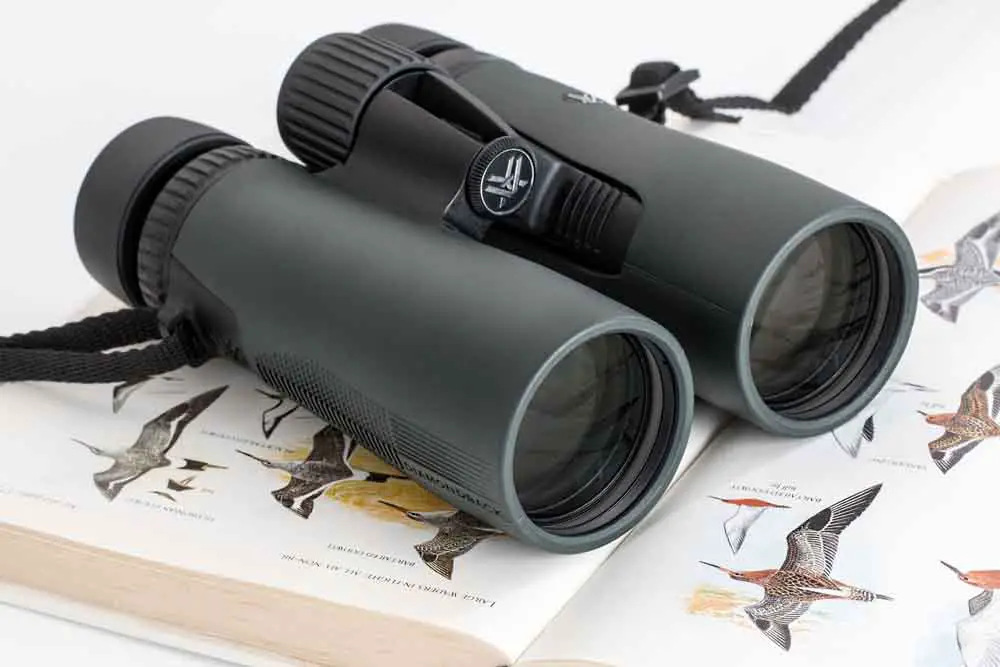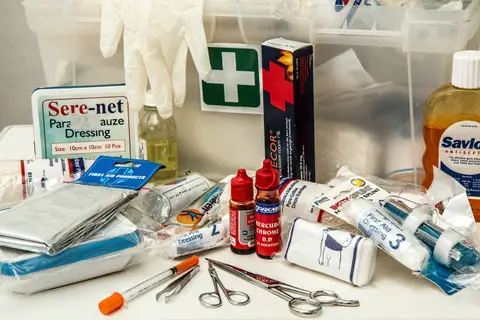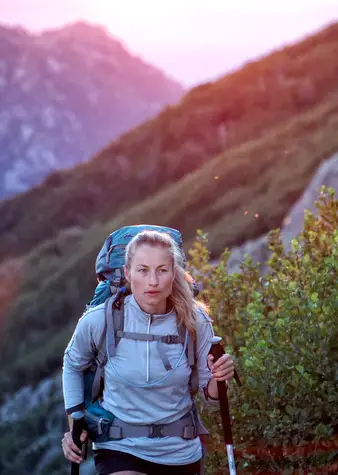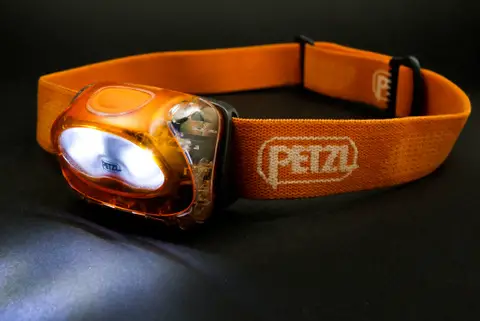10 Hiking Essentials to Pack for Your Next Hiking Trip
Backpacking and hiking often requires having specific gear to enjoy ultimate comfort and safety. From staying hydrated and well fed to fending of insects and treating ailments, it pays to be prepared in the outdoors.
To make sure your next hiking trip is a success both in terms of making it home safely and making the most of nature, here are 10 essentials you should definitely have in your pack.


Binoculars
While most of us now have smartphones these days, very few offer any kind of real magnification capabilities. This means it’s still difficult to see details of objects far off in the distance without the use of binoculars.
Binoculars for bird watching are an essential of many hikers interested in observing wildlife, but they can also be useful for hunting, stargazing, and spotting various potential dangers that may be approaching such as bears or inclement weather.
When choosing a pair of binoculars, look for something lightweight and compact that will fit easily in your backpack if you regularly go on long hikes. They also make even smaller pocket-sized binoculars that allow you to have quick access while hiking.
In addition to seeking out a pair of binoculars with a decent magnification, you should also look for ones that are waterproof and won’t fog up easily. Binoculars are a great tool for observing wild animals without disturbing them and also help you avoid getting too close to dangerous wildlife.
First-Aid Kit
Having a first-aid kit is essential for hiking because you never know when you might need it. Minor injuries and things like insect bites tend to be more common when spending time outdoors.
A basic first-aid kit should include items like bandages, gauze, antiseptic wipes, pain relievers, antibacterial ointment, and band-aids. You want to be able to dress wounds properly and be able to remove things like ticks and treat insect bites.
Being in natural environments allows even minor scrapes and cuts to become infected more easily so it pays to know how to treat small problems before they become bigger ones.
In addition to packing a first-aid kit, it’s also a great idea to take a first-aid course so you’ll know how to use the various items in your kit and be able to effectively treat various ailments such as broken bones, sprained joints, hypothermia, and dehydration. You’ll learn things like CPR and basic life support, in addition to knowing what to do if you or someone you are hiking with has an allergic reaction.
Proper Clothing
It goes without saying that weather in many places can be unpredictable, so it pays to be prepared for a range of different conditions you may face while hiking outdoors. The best way to do this is by utilizing the three layer system of dressing.
The three layer system allows you to easily add or remove clothing in order to adjust to the weather conditions and consists of wearing a base layer, mid-insulating layer, and an outer shell layer.
The goal is to have clothing that is lightweight, non-restrictive, durable, and moisture-wicking. It’s also important that clothing is resistant to dirt, odors, and mold. Good fabrics to use include merino wool and synthetics like polyester and nylon. Avoid cotton as it tends to take a long time to dry and retains odors easily.
Different environments of course call for different types of clothing, so research what weather you can expect where you are hiking and stay tuned to weather reports. And remember that it’s much better to focus on safety and comfort over fashion when it comes to dressing for hiking.
Food and Water
How much and what types of food you take with you hiking will largely depend on how long you plan on being outdoors. While you may be able to get away with a simple snack and a bottle of water for an afternoon hike, multi-day treks will require you to think more about what food items you pack and will probably require you to utilize some sort of water sterilization method.
When it comes to food, you’ll want to pack non-perishable dry goods that are lightweight to carry but at the same time contain a lot of energy and proper nutrients. Great items to pack include nuts or nut bars, fruits (fresh or freeze-dried), jerky, dehydrated meals, and protein bars.
For longer stays in the wild where you plan on packing a portable camping stove , solar cooker, or fire starting materials to cook will open up your options more. You can pack items like rice and may even be able to hunt or fish for fresh food packed with protein.
Having safe drinking water is even more vital than having food, and multi-day hikes usually require you to either boil water from natural sources or use something like sterilization tablets or a purification device/filtration straw to ensure the water is safe to drink.
It’s simply not always possible to carry the amount of water you’ll require for longer hikes and keep in mind that expending energy, especially in warm weather, will require you to replenish liquids and electrolytes more frequently.
Water Bottle or Hydration Pack
Having safe drinking water is one thing, but you then also need somewhere to store it. There are now countless companies that make reusable hiking water bottles in all different shapes, sizes, and materials.
The first step in finding a water bottle that’s right for you is to look for one that will carry the amount of water you’ll likely need on your regular hikes. Most water bottles have a capacity of 16-32 ounces, with most hikers requiring around 16 ounces of water per hour of hiking.
You may need to carry two water bottles for longer hikes unless you plan on sterilizing water from natural sources. The goal is to carry enough water without weighing you down if you don’t have to.
You should avoid glass water bottles when hiking for obvious reasons, which leaves durable reusable plastic or metal in most cases. Both are good options, but plastic can retain odors more and metal bottles will allow you to keep liquids cold or hot for longer periods.
You also must decide how you prefer drinking, whether it’s from a wide mouth bottle with a screw top or a pop-up straw/squirt nozzle. Keep in mind that it can be more difficult to clean bottles with many parts or smaller openings.
There are also hydration packs you wear on your back which allow you to easily drink through a tube mechanism basically hands-free, allowing you to trek on without having to stop and locate your water bottle. However, cheaper models can leak easily and they can be a bit difficult to clean and maintain.
Navigation
It can be easy to get turned around when you’re hiking, especially in areas that are new to you. It’s always important to be able to find your way back and in a timely manner to avoid hiking in the dark.
Many hikers rely on GPS apps via their smartphones and many are quite detailed. Just make sure they offer up-to-date maps and keep in mind that some may require data which may not be existent in remote areas.
It’s a good idea to also carry physical maps of the areas you will be hiking through as well as a compass as a backup in case technology fails. Batteries can die and units can malfunction, so it always pays to compare info from different sources to avoid getting lost.
A Multi-Tool
A multi-tool is great to have as it functions as many different tools all in a super-condensed space. There are many different types of multi-tools on the market, so you can easily seek out one that offers the tools you are likely to most readily use.
Just some of the tools that are often packed into a multi-tool include various knives, mini-saws, scissors, screwdrivers, pliers, and bottle openers. You’d be surprised just how many times various tools come in handy while hiking and camping, especially if repairs to gear are required.

Photo by EvaK [CC BY-SA 2.5 ) wikimedia commons
Headlamp or Flashlight
While most hiking takes place during daylight hours, there are often times when you will find yourself out on a trail after dark whether it’s purposely or by accident from misjudging distances or timing.
It’s a good idea to always carry a flashlight in case you do find yourself caught in the dark or of course if you plan on camping overnight during longer multi-day hikes. They can also be useful when hiking through caves during the day.
There are many different types of flashlights to choose from these days including cheap incandescent flashlights, brighter LED flashlights which have better battery life, and more expensive HID flashlights which can cast a beam of light far distances. There are then also solar powered flashlights and mechanical flashlights where you don’t need to worry about dead batteries which make them useful for longer multi-day treks.
Headlamps are another great option as they free up your hands, allowing you to more easily perform tasks like carry hiking poles, fix gear, pitch a tent, pack up gear in a vehicle after dark or cook food at night.
A Fire Starter
Just like in the TV show Survivor, fire can mean life in an outdoor survival setting. Being able to start a fire allows you to boil water, cook food, dry clothing and gear, and keep warm at night. There are many different fire starters available, some easy to use and some more difficult.
The goal is to find a fire starter that is easy for you. Options include more archaic bow drills, flint and steel, tinder, fuel and matches, solar lighters, and ferrocerium rods. You want to make sure you store your fire starter and any materials necessary for starting a fire in a waterproof container since it can be difficult or impossible to start a fire in wet conditions.
Insect Repellent
Biting insects can make hiking unpleasant or downright unbearable. Wearing long clothing helps, as does mosquito and fly nets. Also effective are insect repellents which can help keep mosquitoes and ticks away.
Repellents containing DEET are usually most effective, but also try to seek out products which are safe for the environment and your skin if you happen to be extra sensitive to chemicals.
Preventing insect bites is important when you consider many areas are prone to mosquito-borne diseases like malaria, West Nile Virus, and Encephalitis. And ticks of course can gift you Lyme disease.
Bonus Tip: Bring a Friend
While you can’t exactly pack a friend, hiking with a friend or several friends can make hiking an exponentially greater experience. Not only is it great to share memorable moments with others, it also makes hiking a lot safer.
Two minds or more are always better than one. Having a friend along means you have assistance should you get sick or injured and they can often offer helpful advice which may allow you to avoid danger or getting lost.
Final Word
Now that you know what to bring on your next hike, it’s time to start planning your adventure! Just remember to pack light and try and only bring the essentials so you can enjoy both a safe and enjoyable experience out on the trails.





























July 15, 2022
uowg9o